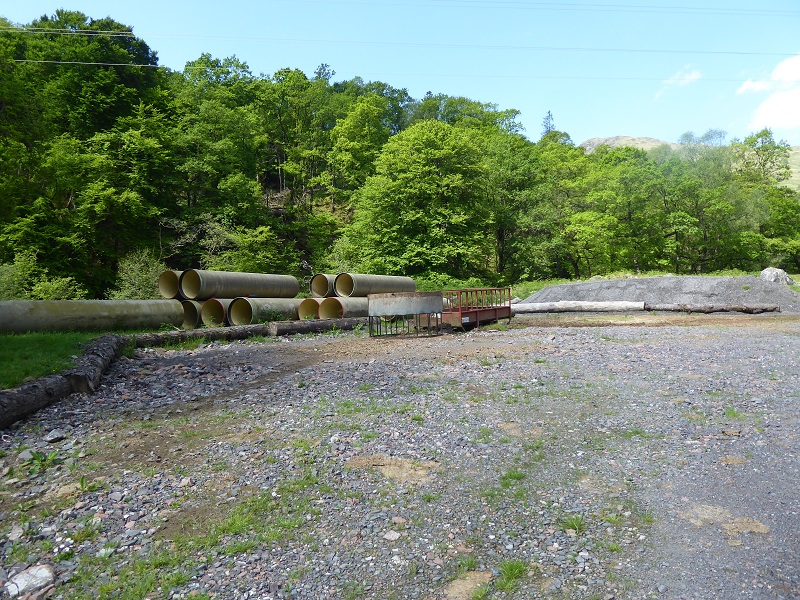
After my visit to the Keltie Water hydro scheme at the beginning of May (see here), I complained to the Convener of the Loch Lomond and Trossachs National Park Authority, James Stuart, about the Park’s continued failure to address the mess left by a development which they had nominated for a Scottish Planning Quality Award. Two emails later and Mr Stuart had confirmed that the scheme was “being processed into the enforcement system”.
So, enforcement action is now being taken against a hydro scheme nominated for a Planning Quality Award! In a rational world not based on the interests of the few, that would be a wake up call to the Park’s Planning Committee, Board and Scottish Ministers.
I responded to James Stuart with a further email (see here for full text) pointing out that the abandoned detritus at the Allt Fionn hydro scheme (photo above), which HAD received a planning quality award five years ago, was even worse. I also raised the need for the LLTNPA to conduct an audit of all the 45 or so hydro schemes constructed in the National Park and offered to come to the Board and speak about this. While James Stuart’s reply (see here) was effectively a brush off and written in the usual quango speak, it did admit that the Park’s Planning team is not properly resourced:
“I am satisfied that the risk informed approach adopted is appropriate and does maximise the deployment of the limited resources we have available. That being said, this approach will continue to be reviewed and will evolve to drive efficiency and effect, to embrace emerging best practice and to meet the changing demands of monitoring and enforcement.”
This confirms what I have long believed, the failures of the LLTNPA are not the fault of frontline staff but the responsibility of senior management and the powers that be within the Board. Instead of telling the truth, each year these “leaders” submit glossy reports on planning performance to Ministers telling them what they want to hear. Cut through the spin about “risk management” and James Stuart effectively appears to be saying that only where people complain and the Park’s reputation is likely to be damaged will the Park take enforcement action. That’s what has happened at Keltie Water.
James Stuart’s email was silent on whether the LLTNPA will do anything about the blight caused by the abandoned pipes at the Allt Fionn and he clearly doesn’t want me or anyone else to speak to his Board about other hydro disasters in the National Park. On the Allt Fionn, my next step is to write to Scotland’s Chief Planner and request they investigate how it was ever nominated and approved for a Quality Award. I will also suggest they might want to strip the LLTNPA of their Award just like Fred Goodwin was stripped of his knighthood. Watch this space!. Meantime, its clear from James Stuart’s “do nothing” response that more people who care about the National Park need to complain and campaign about hydro schemes if anything is to change.
For anyone interested in how to do this, I am on the panel tomorrow for an event organised by Patagonia at the Storytelling Centre in Edinburgh which will show their film “Save The Blue Heart” and discuss the Glen Etive hydro schemes https://www.facebook.com/events/384552418822134/)
The rest of this post illustrates what is still wrong with the upper Glen Falloch scheme, which I also revisited in May, two years after I last blogged about this (see here).
The Upper Glen Falloch hydro scheme
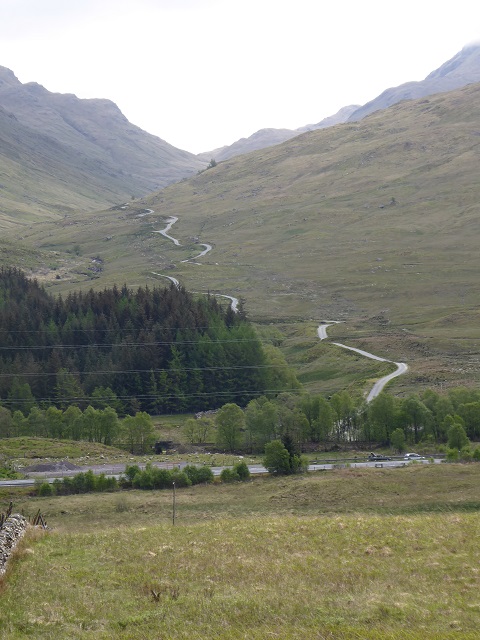
The hydro scheme has had a major landscape impact on Upper Glen Falloch. Most of this side glen was previously wild and unspoilt as is befitting for a National Park. Its wild character has been effectively destroyed through the widening and extension of the road and the disastrously designed and executed intake pool. While prior to the hydro scheme there was a road up the first section of the glen, the original planning application, which was approved by the Scottish Government on the advice on the National Park Authority, allowed it to be doubled in length. A further planning application for the temporary construction track from the road end to the intake to made permanent was then approved by the LLTNPA.
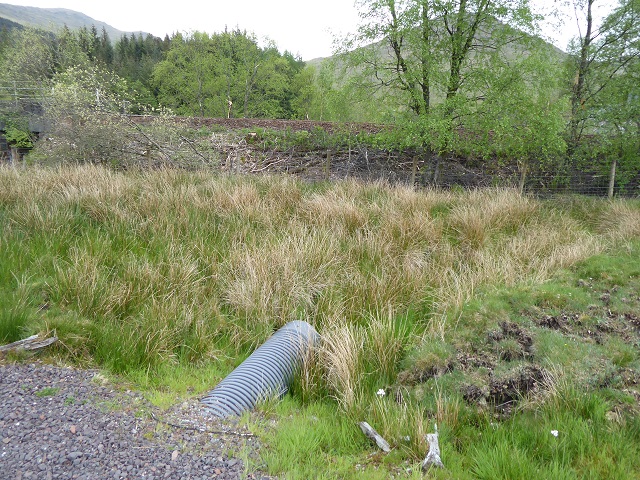
Since I wrote about Glen Falloch in 2017 there has been some attempt to restore the damage created by the construction – as was reported to the LLTNPA Board. It would only take a Board Member visiting the site, however, a couple of minutes to realise that the restoration work still leaves a lot to be desired.
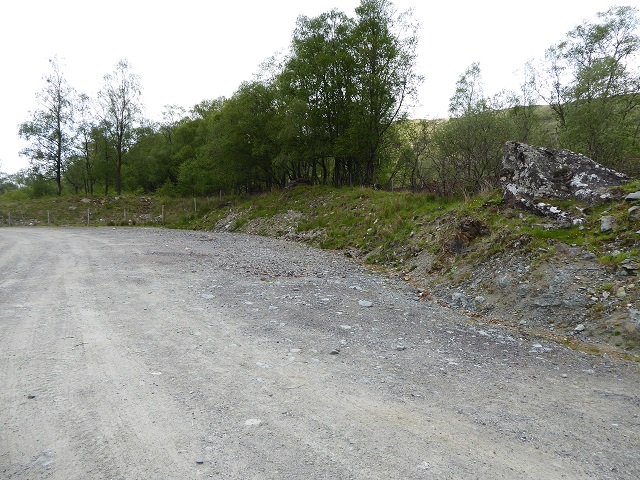
Why has the start of the access road been left like this? The answer appears to be that its cheaper for the landowner and developer not to restore ground affected by construction and the LLTNPA has failed to take effective enforcement action. Unfortunately its not possible for the public to find out what the LLTNPA has tried to fix because it does not publish such information on the planning portal. This is not what one should expect for a National Park and does not meet the standards set out in the Park’s own best practice guidance on renewables (SPG-Renewables-final).
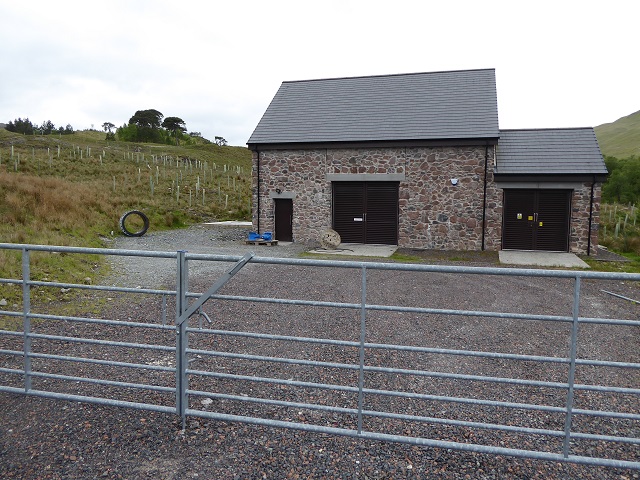
The landscaping of the powerhouse leaves lots to be desired. The vehicle area is unnecessarily large, contrary to the Park’s best practice guidance, again because its cheaper for developers to cover ground with imported stone than to restore it. An opportunity to allow the Glen Falloch native pinewood to regenerate naturally, as recommended in the Park’s draft Trees and Woodland Strategy (see here), has been lost and instead a fenced area around the powerhouse planted.
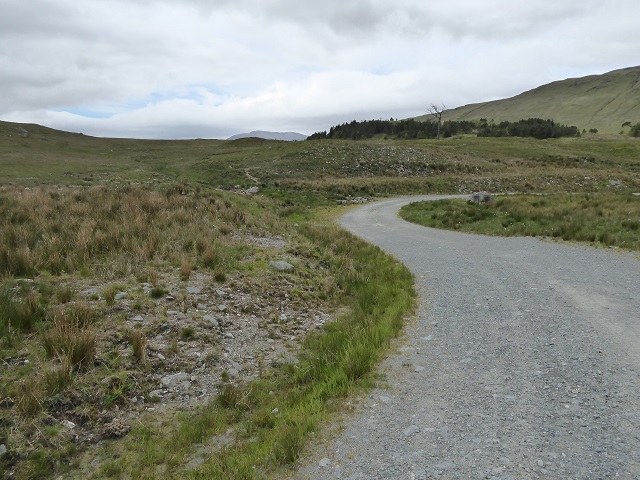
A much greater opportunity to allow the native pinewood to expand back up the glen and hide the eyesore of the first section of road has also been lost.
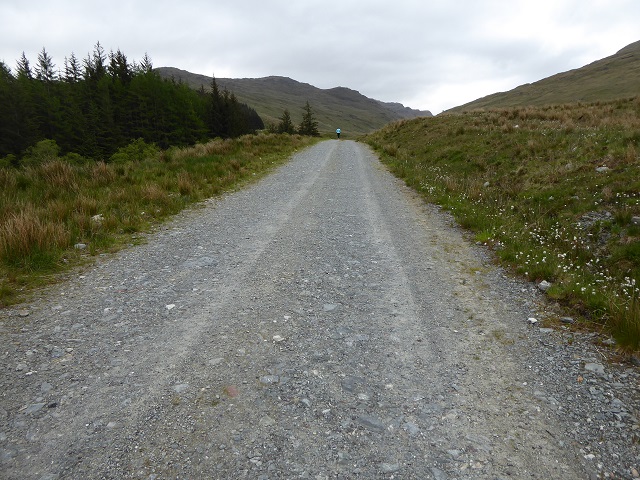
While efforts have been made to restore some of the edge of the road, its still much wider than the 2.5m maximum recommended in the Park’s best practice guidance. As a consequence vehicles drive anywhere which effectively prevents a central grass strip, which would help reduce the visual impact, from developing.
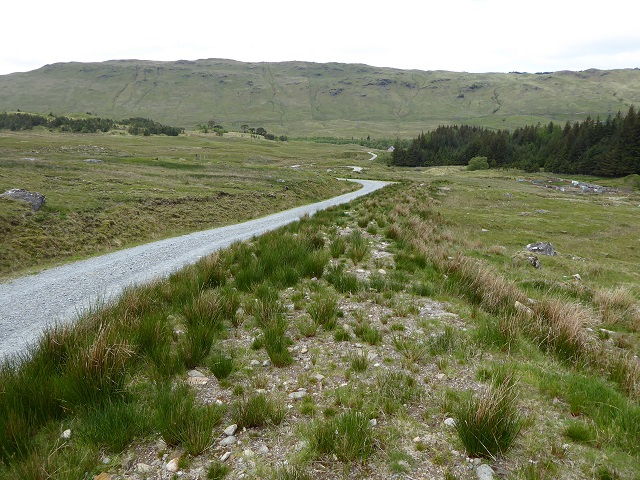
Instead of retaining the vegetation and turf which was excavated during the creation on the construction track and using it to restore the ground, the newly exposed mineral soils have been left bare, grazed and as consequence colonised by a broad band of rush. Arguably, that’s the worst ecological outcome possible. Either rough grazing or pinewood regeneration would have been far more preferable. At Keltie Water the broad band of rush above the former water pipeline is still there despite the pipeline now having been decommissioned. This suggests the impact of poor restoration on the vegetation is likely to be permanent. The LLTNPA should be commissioning research on this rather than ignoring the issue.
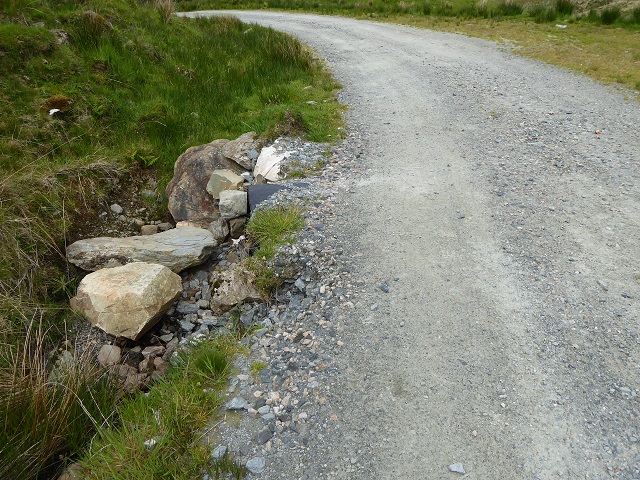
While there had been an attempt to improve the finishing to the culverts under the road since my last visit, some of the work was of poor quality and had already collapsed.
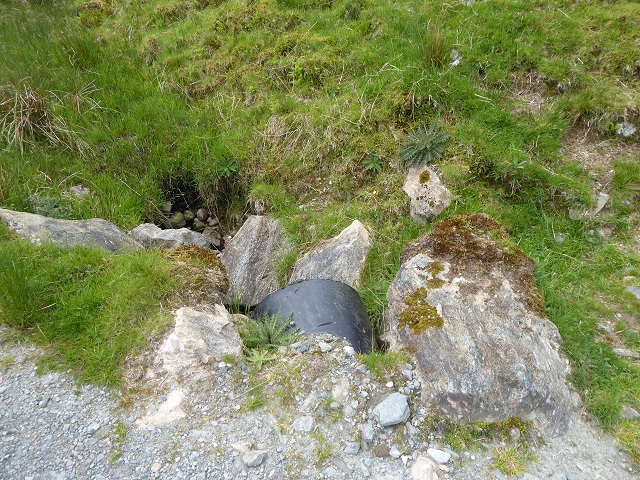

On the positive side, many sections of the drainage ditch at the side of the track had been restored and were covered in quite dense vegetation which will help reduce future erosion. This is one aspect of the Upper Falloch scheme which is rarely seen elsewhere and should be highly commended.
Higher up the glen, however, the quality of the restoration deterioriates.
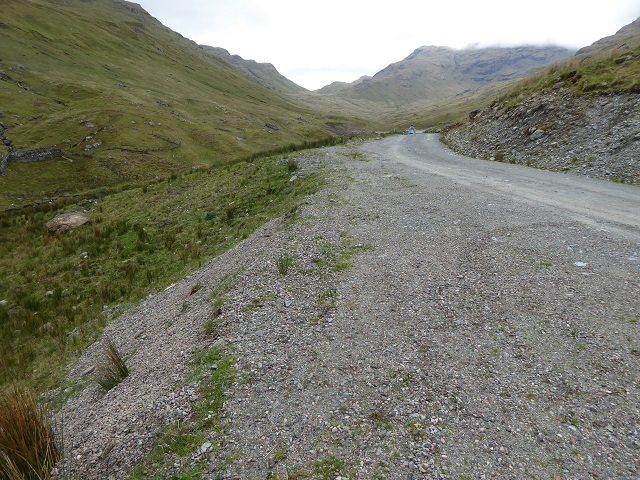
This section of the road was subject to the separate planning application to the LLTNPA (agreed in 2013) and they are therefore are solely responsible (i.e there was no Scottish Government involvement),
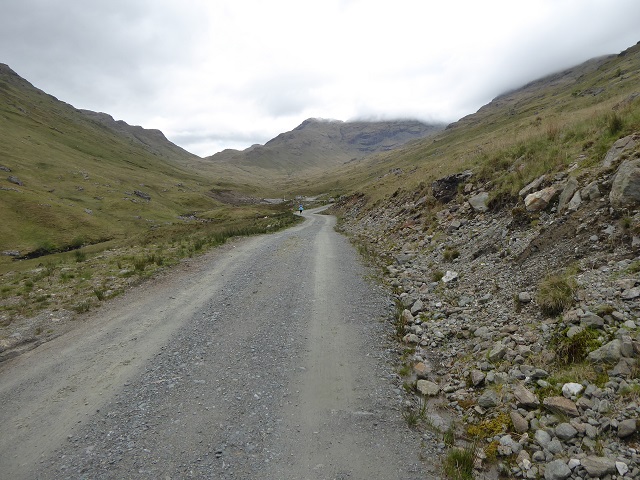
The hydro intake and surrounding area is an even greater disaster. The hydro was not functioning to full capacity because of a design flaw so last year the LLTNPA granted planning permission for the size of the stilling chamber “to improve the hydraulic efficiency of the structure” (see here). This required extensive engineering works, including diverting the river again and meant that the recolonisation of vegetation that had taken place on the site, such as it was, had to start all over again.
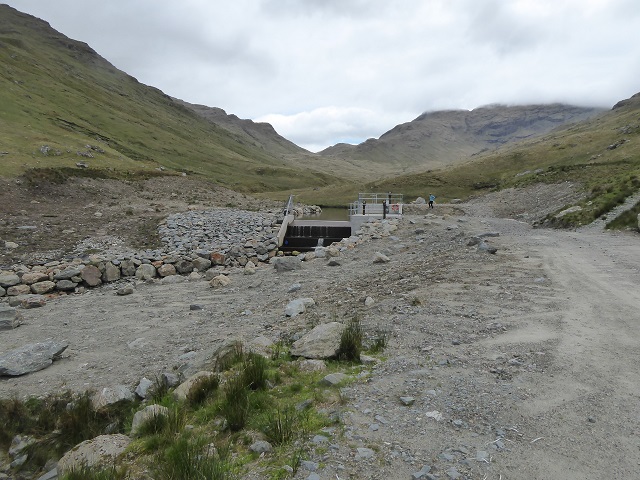
This has resulted in some changes to the landscaping since 2017, though whether this will be any improvement is questionable. The bare area is likely to turn into a giant patch of rush. This again results from the failure of the LLTNPA and the Ecological and Landscape Clerks of Works to ensure that turf and vegetation was properly stored at the time of the original construction for restoration purposes. Had it been, it could have been relifted and then replaced over this large bare patch
The fundamental issue, however, is the extent of the rip-rap bouldering which has been used to shore up the banks of the intake and the banks of what remains of the once proud river below.
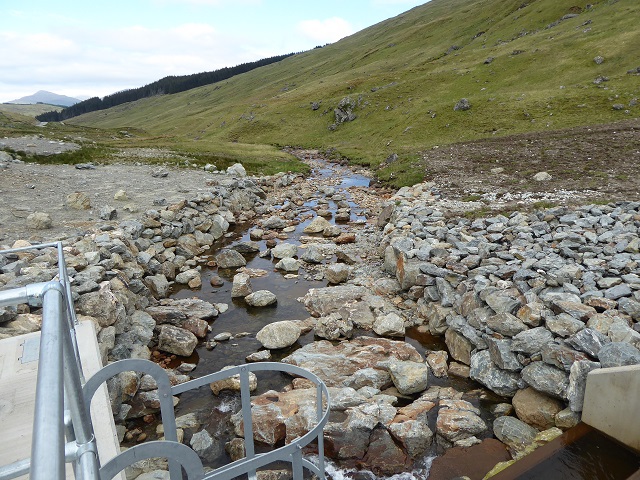
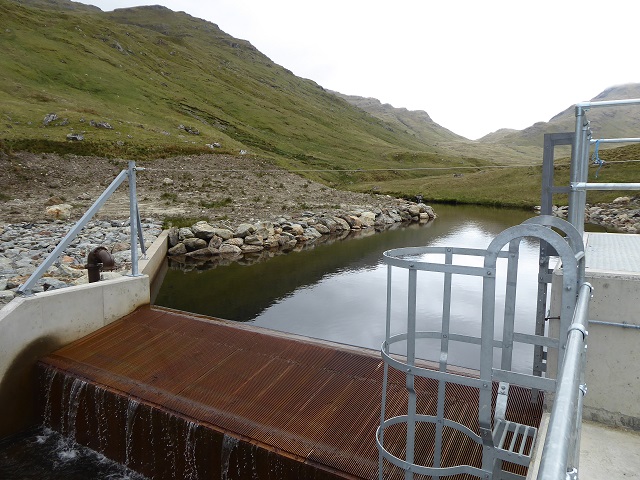
This is not, strictly speaking, a run of river hydro scheme at all but a small new reservoir that has been constructed without any regard for the landscape. Here is a graphic, from the Planning Application, of how it was meant to look:
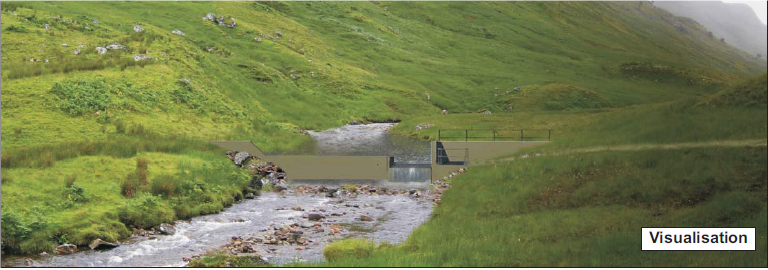
The LLTNPA’s much vaunted planning system has clearly failed to deliver what was promised.
In my view, unless ways can be found to construct run of river hydro schemes in sensitive areas without the use of rip rap bouldering they should be refused. Why didn’t the LLTNPA put a halt to this hydro scheme when the extent of its landscape impacts became apparent?

Why didn’t they use the opportunity presented by the new planning application last year to remedy some of the fundamental defects with this scheme?
From major design issues to small restoration details, the problem is the LLTNPA as planning authority has failed to hold landowners and developers to account.
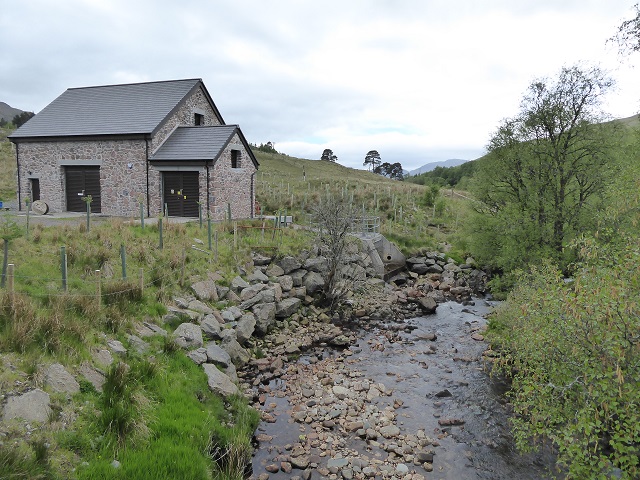
The final salt in the wound is that despite the frequent failure of these hydro schemes to produce any electricity – a consequence of the west of Scotland’s “flashy” rivers which rise and fall with the rain – they are nevertheless highly profitable to landowners and developers because of what the public pay through our electricity bills. Hence why is was worth re-engineering the scheme last year to increase its capacity.
While there are some fundamental issues about where hydro schemes should be located – including Glen Falloch – even a half effective planning system should have been able to reduce much of their landscape impact, given a little will. Unfortunately, as we have learned with Flamingo Land, the Park’s senior management appears more interested in acting in the interests of developers than in the public interest.
What needs to happen
Two years ago, when blogging about Glen Falloch, I produced a list of what I believe needed to change. The actions the LLTNPA has taken since then has not addressed the fundamental issues and I believe my suggestions for what action the Park needs to take still stands. I paste it below for reference but meantime, if you see a hydro scheme with poor finishing, please lodge an official complaint.
“The LLTNPA needs both to learn from the Glen Falloch disaster but also find ways to reduce the impact of what has happened. This is not just about Glen Falloch, but the forty odd other hydro schemes in the National Park, many of which have similar impacts. Here is my first go at a list of actions that are needed:
- Planning decisions that have significant landscape implications should no longer be delegated to staff but considered by the Planning Committee, as in the Cairngorms National Park Authority.
- The LLTNPA should commission an independent report into the Glen Falloch hydro schemes which should fully involve those who are concerned about the protection of Scotland’s landscape, which should look both at the mistakes that have been made and how they can be reversed.
- The new Partnership Plan needs to incorporate a meaningful landscape policy which, like the Cairngorms National Park Authority, indicates areas where there will be a presumption against development. Unless the LLTNPA does this, the current destruction of landscape in the National Park will simply continue.
- The LLTNPA Board should engage with the Glen Falloch estate and develop a plan on how to remove the hydro tracks granted consent by staff. Over the next ten years the estate will receive a huge income from the hydro schemes which could still be used, as originally intended, to remove the tracks.
- Where existing tracks were widened, the LLTNPA needs to ensure that all the restoration meets the standards set out in its good practice guidance. Tracks which are broader than the maximum and unfinished culverts for example should not be tolerated.
- The LLTNPA should put in place measures to control the off-road use of vehicles, particularly in wild land.
- The LLTNPA Board and senior staff need to get out more and take a look at what is being done in their name.”
[Postscript: this post has been updated since I was alerted to the major engineering works which took place at the intake last year]

Similar issues at the Burn of Mar hydro scheme on Conic Hill. It’s several years since reinstatement work was due to be completed. I’ve been complaining to the same people for the last two years. They promised another site visit in June which hasn’t happened. I’ve also asked why an enforcement notice has not been issued. Meanwhile they are allowing the same contractors to start on a new scheme on the Burn of Achlais less than 1km away.
Magic a reply from LLTNP a couple of hours later.
“I acknowledge that the subject of your concerns has been an ongoing matter for some time.
The monitoring of planning applications and any potential breaches of the consent is often a lengthy, complex process with unpredictable timescales. Each case is assessed on its own merits in order to ensure that the approved development is ultimately delivered. This often involves continued negotiation to resolve issues pre-emptively and as they arise.
I can assure you that your concerns have been taken into careful consideration. We take guidance from our enforcement charter when concerns such as the ones you have raised are brought to our attention. The National Park as the planning authority has a legal obligation to produce an enforcement charter which is updated every two years. Please find a link to our enforcement charter here.
All potential breaches of planning consent are investigated thoroughly; we generally seek to resolve matters informally. Formal action is used as a last resort where it is considered expedient in the public interest. Enforcement action is not intended to be a punitive process; any action taken must be fair, proportionate, reasonable and responsive.
I appreciate your frustration surrounding the development, however, I assure you the National Park is well aware of the issues and what actions need to take place to provide a resolution. In this case it is not considered to be in the public interest to serve an enforcement notice as detailed previously. The issues which you have highlighted are being monitored and we are working with the landowner to ensure that specific actions are agreed and a realistic timescale for resolution is set.
As regards to your point that ‘it seems very unsatisfactory to allow a further scheme to be developed by the same organisation,’ I have to advise that the identity of an applicant or agent cannot reasonably be a material consideration in the determination of a planning application.”
Thanks Kevin, it appears parkswatch may be even more closely monitored than I had thought by the Park’s 8 person communications team! Reading through the platitudes and parkspeak the message is clear, this National Park NEVER believes its “fair, proportionate, reasonable” to take planning enforcement action against landowners and developers however much they trash the Park’s beautiful landscape. Keep going on the Burn of Mar hydro by Conic Hill, its a national disgrace, and whatever the law might say its wrong that people who are responsible for such disasters are then just allowed to put in another Planning Application with no consideration of their record.
Thanks for your continued translation of “quango talk” into plain English. You might wish to refer James Stewart to the (free) resources available here http://www.plainenglish.co.uk/ and recommend that the Authority considers working towards accreditation in Plain English communication with the community they serve. The Scottish Government recommends this sort of approach for all their communications/laws and highlights the SMOG tool as a quick way of testing this (https://www.learningandwork.org.uk/SMOG-calculator/smogcalc.php). SMOG = Simple Measure Of Gobbledegook. Mr Stewart’s note to you came out at 22.7 – about twice the recommended result for the “average” Scottish citizen’s comprehension level (i.e. an extremely high level of “gobbledegook”). Your text came out much lower 🙂
Brilliant! Thanks, Nick
I notice the concrete has even been left white, presumably to blend in with the stone, instead of painted green to blend in with restored grass! Unfortunately nothing works in this country anymore and no-one does their job (UK or Scotland). Tragic.